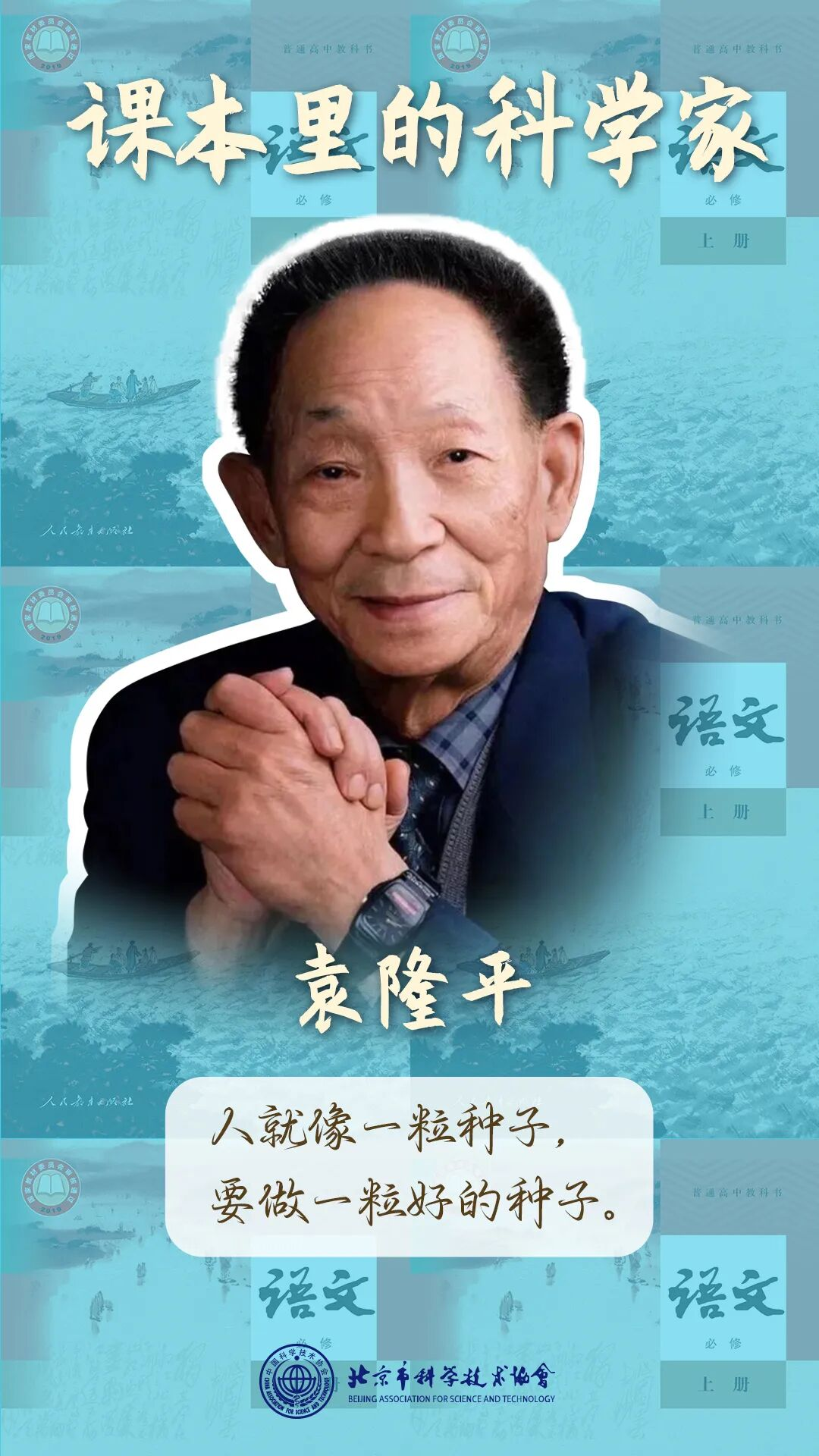Yuan Longping: The Scientific Pillar Amidst Golden Rice Waves
Yuan Longping was known as the "Father of Hybrid Rice" and a recipient of the "Medal of the Republic". The International Astronomical Union even named an asteroid "Yuanlongping" in his honor. His name is closely linked to the golden waves of rice, and his deeds are included in the PEP High School Chinese textbook for Grade 10 (Compulsory Volume 1), allowing younger generations to understand the profound meaning of "writing research papers on the land of the motherland".

At the age of 19, Yuan Longping faced a crucial choice when filling out his college application. His father hoped he would enroll in Nanjing University to pursue a path of "achieving success through academic excellence", but the seeds of agronomy sown during a primary school visit to a horticultural farm, combined with his firsthand experience of the hardships of food shortages, led him to firmly refuse. Instead, he enrolled in the Department of Agronomy at Southwest Agricultural College (now part of Southwest University), determined to "study agriculture for the benefit of the people". After graduating in 1953, he was assigned to teach at Anjiang Agricultural School in Hunan Province. In addition to teaching, he began his research on a half-mu experimental field allocated by the school, eventually focusing on rice studies—because he deeply understood that as rice is the staple food for people in southern China, increasing rice yield per mu is the key to solving the food problem.

Yuan Longping, who worked as a teacher at Anjiang Agricultural School in Hunan Province, discovered a remarkable rice plant that stood out prominently among the others.
In July 1961, Yuan Longping discovered a remarkable rice plant among conventional rice varieties: it had a plump structure, large ears, and more than 160 grains per ear. He estimated that its yield per mu would far exceed the average level at that time. He carefully marked and preserved the seeds, but when he sowed them in the spring of 1962, the seedlings grew unevenly and matured at different times. Drawing on his knowledge of genetics, he recalled Mendel's Law of Segregation and concluded that this was the first generation of a natural hybrid rice plant. This insight defined his direction of "developing artificial hybrid rice", and the experimental field at Anjiang Agricultural School became the starting point of his research.

Yuan Longping, along with researchers from the Hunan Academy of Agricultural Sciences, conducted research on hybrid rice in the fields.
The international academic community questioned him, citing the claim in Principles of Genetics by American geneticists Sinnott and Dunn that "self-pollinating crops have no heterosis". However, Yuan Longping firmly believed that "practice is the sole criterion for testing truth". Starting from 1964, he embarked on a journey to find "male sterile rice plants". In 1970, his team discovered a wild male sterile rice plant named "Wild Abortive" (Yebai) at Nanhong Farm in Hainan, breaking through a major research bottleneck. In 1973, he successfully developed the three-line system of indica hybrid rice; in 1974, he bred "Nanyou No. 2", which achieved a yield of 628 kg per mu in experimental planting—more than twice that of conventional rice varieties at that time.
In 1976, hybrid rice was widely promoted across China, increasing yields by over 20% compared to conventional rice. Later, Yuan Longping and his team developed the two-line system of hybrid rice, and the yield of super hybrid rice repeatedly set world records. Today, hybrid rice is promoted in more than 70 countries worldwide; in Madagascar, it is even featured on the country's largest-denomination banknote. Even as an academician, Yuan Longping insisted on "going to the fields every day". His "dream of enjoying the cool under rice plants" embodies his "dedication to the country with a broad mind", setting a scientific example for young people to take root in the land and serve the people.
Note: The content of this document is from the Beijing Association for Science and Technology.








